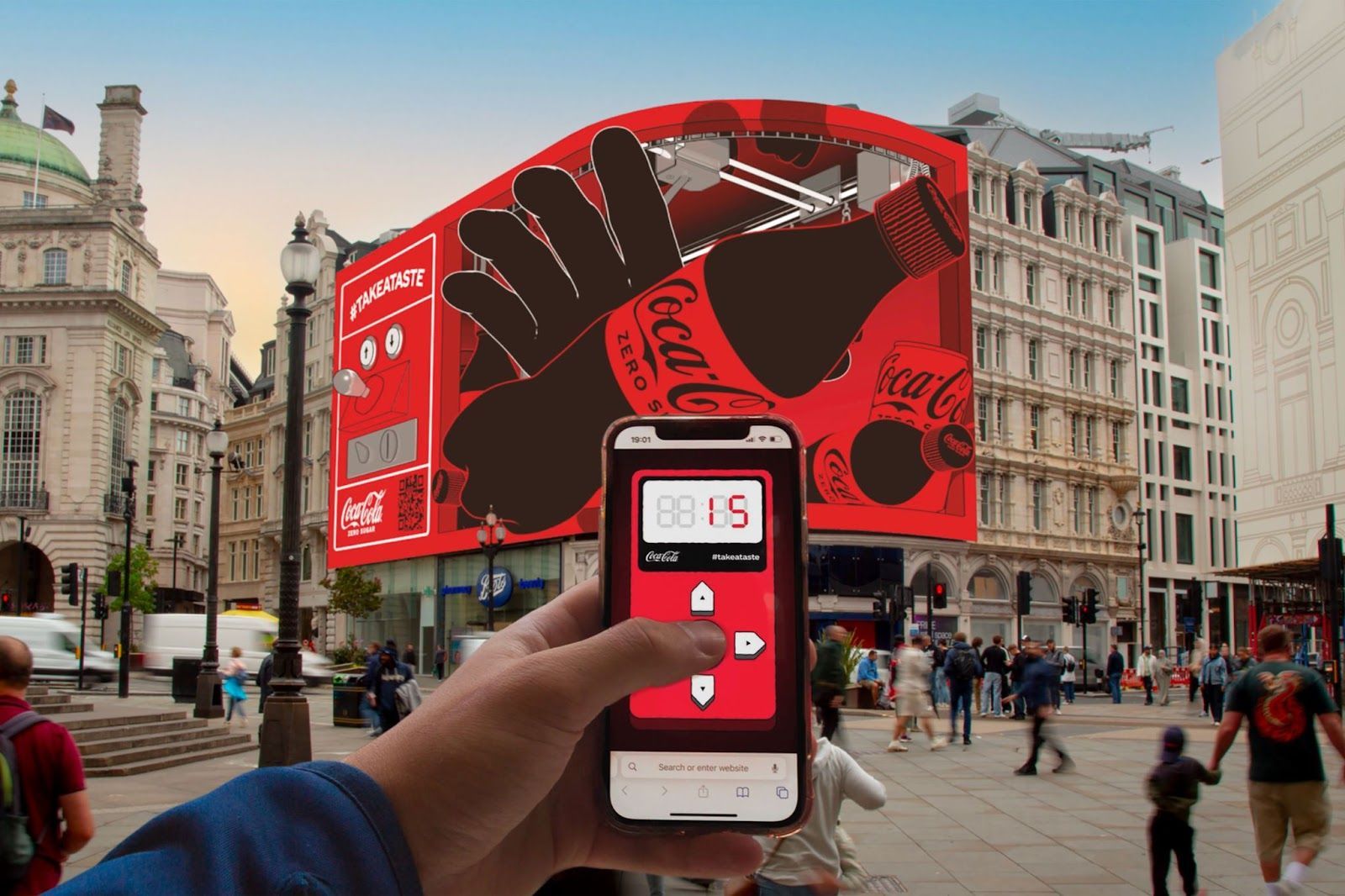Enterprise Augmented Reality Deployments
Enterprise AR deployments are taking center stage as organizations strive for increased efficiency, improved employee training, enhanced collaboration, and more intelligent decision-making. This article explores the evolving landscape of enterprise AR, examines real-world examples, and explains how businesses can leverage AR for a competitive edge.
Introduction to Enterprise AR
Augmented reality overlays digital content—graphics, text, or 3D models—onto the real world. When deployed across an enterprise, AR solutions offer a powerful way to deliver complex information in real time, streamline workflows, and reduce costly errors. Enterprise AR is reshaping traditional business models from training and maintenance to remote assistance and design visualization.
Why AR Matters in the Enterprise
Enterprise AR deployments bring many benefits, including:
- Enhanced Training and Skill Development: AR allows for immersive, hands-on training experiences without the risks or costs of real-life simulations. For example, virtual work instructions can reduce training time while boosting first-time quality.
- Improved Remote Assistance: Technicians with AR headsets can receive live expert guidance. Remote assistance tools overlay digital instructions on machinery, speeding up troubleshooting and repair.
- Design and Visualization: AR transforms how teams design and prototype products. Designers can rapidly iterate and collaborate by overlaying virtual components on physical prototypes.
- Operational Efficiency: AR deployments help organizations optimize workflows, reduce errors, and save time and money by reducing dependency on paper-based manuals and static displays.
- Customer Engagement: In retail and marketing, AR creates interactive experiences that allow customers to visualize products in their environment, thereby driving higher conversion rates.
Key Enterprise AR Deployment Strategies
Enterprises looking to implement AR should consider a comprehensive strategy addressing technological and organizational challenges. Below are several key deployment strategies:
1. Identifying Use Cases
Before investing in AR, companies must determine which business processes will benefit most from the technology. Common use cases include:
- Employee Training: Deploying AR for safe and efficient training programs, particularly in complex or hazardous industries.
- Maintenance and Repairs: Using AR headsets to guide technicians through intricate repair processes.
- Remote Collaboration: Empowering teams to collaborate with experts who can overlay digital instructions onto the physical world.
- Product Design and Prototyping: Enabling design teams to visualize and modify products in a real-world context.
- Customer Experience: Offering virtual try-ons and interactive product demos to enhance retail engagement.
One highlighted example is the use of AR in training scenarios, which has dramatically reduced downtime and improved first-time fix rates.
2. Technology Integration
Successful AR deployments rely on seamless hardware, software, and data integration. Enterprises must assess their existing IT infrastructure and determine whether upgrades are necessary. Key considerations include:
- Hardware: Selecting robust AR headsets, mobile devices, or smart glasses that can withstand industrial environments.
- Software Platforms: Leveraging AR development platforms such as the BrandXR Studio and Unity, which enable rapid prototyping and deployment of AR applications.
- Data Connectivity: Ensuring that real-time data streams can be integrated with AR applications for up-to-date guidance and remote monitoring.
- Security and Privacy: Implementing rigorous security measures to protect sensitive data as it is overlaid in a mixed environment.
3. Pilot Projects and Scaling
Rather than launching a full-scale enterprise rollout from day one, many organizations begin with pilot projects to validate the effectiveness of AR solutions. Pilot projects allow companies to:
- Test the Technology: Identify any integration issues and evaluate user feedback.
- Measure Impact: Quantify improvements in productivity, error reduction, and training efficiency.
- Iterate Quickly: Use pilot results to refine the AR application and deployment process before scaling enterprise-wide.
Early adopters have used pilot programs to achieve measurable outcomes, such as dramatically reducing training time and increasing first-time quality in manufacturing processes.
4. Change Management and User Adoption
Deploying AR at scale requires more than technology—it demands a cultural shift within the organization. Key steps include:
- Training and Support: Providing comprehensive training for employees to ensure they are comfortable using AR tools.
- User Feedback: Continuously gathering feedback to refine the AR interface and improve usability.
- Change Champions: Appointing AR champions within departments to lead the adoption effort.
- ROI Measurement: Tracking key performance indicators (KPIs) such as reduced downtime, increased productivity, and improved quality metrics to justify the investment.
Enterprise AR Use Cases in Action
Let’s explore some real-world applications that demonstrate the transformative potential of AR in the enterprise setting.
AR in Training and Simulation
One of the most compelling enterprise AR use cases is in employee training. Traditional training methods often rely on paper manuals or 2D videos and can be inefficient and complex to update. With AR, trainees can interact with a 3D overlay that guides them step by step through complex procedures. For instance:
- Case Study Example: A global aerospace company uses AR headsets to train technicians on aircraft wiring. Engineers wear smart glasses that overlay digital diagrams directly onto the physical aircraft. This approach cuts wiring time by nearly 30% and improves first-time assembly accuracy by as much as 90%. These results highlight how AR can reduce error rates and significantly speed up learning curves.
Remote Assistance and Maintenance
When machines break down or require routine maintenance, time is money. AR deployments in maintenance can offer remote expert support that minimizes downtime:
- Real-World Example: In manufacturing, a technician encountering complex equipment can use an AR headset to share their live view with an expert off-site. The expert can then overlay digital annotations onto the technician’s display, guiding them through the repair process. Some enterprises have reported a reduction in downtime by up to 50% when using AR-based remote assistance tools.
Design and Prototyping
Product development cycles are accelerating, and companies need to iterate designs rapidly. AR offers a unique advantage by allowing teams to visualize digital prototypes in a real-world setting before building physical models:
- Industry Insight: An automotive manufacturer overlaps digital CAD models onto physical prototypes using AR. Designers can see how the new parts integrate with existing systems and identify potential design flaws early in the process. This reduces costly revisions and improves collaboration between cross-functional teams.
Enhancing Customer Experience
Retailers are increasingly turning to AR to provide a more immersive customer experience. By letting customers visualize products in their own environments, companies can increase engagement and drive sales:
- Example in Action: A home furnishings retailer deploys an AR mobile app that allows customers to place true-to-scale 3D models of furniture in their living rooms. Customers can experiment with different layouts, colors, and sizes before purchasing. This hands-on experience leads to higher customer satisfaction and fewer returns, as buyers clearly expect the product to fit in their space.
Collaborative Mixed Reality Environments
In addition to AR, many enterprises are exploring mixed reality (MR) solutions that combine elements of AR and VR to create shared, immersive environments for collaboration:
- Collaborative Use Case: A global engineering firm has implemented an MR platform that enables teams across continents to collaborate in a virtual design studio. Using MR headsets, team members can view and manipulate 3D models simultaneously, regardless of their physical location. This collaborative environment fosters faster decision-making and innovation.
Challenges and Considerations
While the benefits of enterprise AR deployments are substantial, several challenges must be addressed:
Technological Limitations
- Hardware Constraints: Although AR headsets have improved, many devices still face issues with battery life, field-of-view limitations, and durability in industrial environments.
- Integration Complexity: Ensuring seamless integration with existing systems (e.g., ERP, CRM, and legacy databases) can be complex and costly.
- Software Scalability: Developing custom AR solutions that scale across multiple departments and locations requires significant software development and IT infrastructure investment.
User Adoption
- Learning Curve: Employees may resist adopting new technology, especially if significant changes to established workflows are required.
- Ergonomics and Comfort: Extended use of AR headsets can cause discomfort or fatigue, which may hinder user adoption.
- Change Management: Successful deployment relies on effective change management strategies, including continuous training, clear communication, and robust support.
Security and Data Privacy
- Sensitive Data: Enterprise AR applications often handle sensitive operational data, and ensuring its security is a top priority.
- Cybersecurity Threats: As AR systems become more integrated into business operations, they become potential targets for cyberattacks.
- Compliance: Enterprises must ensure AR deployments comply with relevant data privacy regulations and industry standards.
Measuring ROI
- Cost vs. Benefit: Implementing AR technology requires a substantial upfront investment. Organizations must carefully measure the return on investment (ROI) through metrics such as increased productivity, reduced downtime, and improved quality.
- Long-Term Impact: Determining the long-term benefits of AR deployments may be challenging, particularly as the technology evolves.
Future Trends in Enterprise AR
The landscape of enterprise AR is evolving rapidly. Several trends are poised to shape the future of AR deployments:
Integration with Artificial Intelligence
- Smart Assistance: Combining AR with AI can lead to more sophisticated remote assistance, where AI algorithms analyze live data and provide real-time recommendations to technicians.
- Predictive Maintenance: AI-powered AR applications can predict equipment failures before they occur, reducing downtime and maintenance costs.
Advancements in Hardware
- Next-Generation Headsets: Future AR devices are expected to offer more expansive fields of view, longer battery life, and improved ergonomics, making them more suitable for prolonged enterprise use.
- Wearable AR: The development of lightweight, comfortable AR glasses could revolutionize how employees interact with digital content, making AR a ubiquitous part of daily operations.
Expansion Across Industries
- Sector-Specific Solutions: Industries such as healthcare, manufacturing, and logistics are developing tailored AR solutions to address their unique challenges.
- Collaborative Platforms: In a globalized business environment, enterprise AR platforms that facilitate collaboration and data sharing among remote teams will become increasingly important.
Convergence of AR, VR, and MR
- Mixed Reality Workspaces: The convergence of AR, VR, and mixed reality (MR) will create fully immersive workspaces in which the physical and digital worlds blend seamlessly.
- Unified Communication Platforms: As these technologies converge, enterprises can expect more unified communication and collaboration platforms that leverage each medium's strengths.
Best Practices for a Successful AR Deployment
To maximize the benefits of enterprise AR, consider the following best practices:
- Start Small, Scale Fast: Begin with pilot projects that target high-impact areas. Use the insights gained to inform broader deployments.
- Invest in Training: Provide robust training programs to ensure employees are comfortable and proficient with AR tools.
- Collaborate with Experts: Partner with AR development experts and technology vendors (like BrandXR) to leverage best practices and accelerate deployment.
- Focus on User Experience: Prioritize ergonomics and interface design to ensure that AR applications are user-friendly and effective.
- Measure and Iterate: Continuously track performance metrics and gather user feedback. Use this data to refine AR applications and improve ROI.
- Ensure Robust Security: Implement strong cybersecurity protocols to protect sensitive data and comply with industry regulations.
- Foster a Culture of Innovation: Encourage employees to experiment with AR applications and share their insights. This can drive organic adoption and innovation.
Conclusion
Enterprise augmented reality deployments are transforming how companies operate in the digital age. Organizations across industries already benefit from improved training, enhanced remote assistance, and more engaging customer experiences. While hardware limitations, integration complexities, and security concerns remain, a thoughtful strategy that includes pilot projects, user training, and continuous improvement can unlock AR's full potential.
By embracing enterprise AR, businesses enhance productivity and efficiency and position themselves at the forefront of digital transformation. As AR hardware and software advance and AI and mixed reality technologies converge, the opportunities for innovative enterprise deployments will only grow. Companies that invest in AR today will be better prepared for tomorrow’s competitive landscape—where blending the physical and digital worlds is not just an advantage but a necessity.
For enterprises seeking a competitive edge, now is the time to explore AR. Whether you want to streamline training, reduce maintenance downtime, or revolutionize product design, enterprise AR deployments offer a clear pathway to future-proof your operations. With thoughtful planning, strategic partnerships, and a commitment to innovation, the potential of augmented reality can be harnessed to drive significant business value.
Embracing enterprise AR is not just about adopting a new technology but about reimagining your entire business process. From the factory floor to the boardroom and beyond, augmented reality proves that the possibilities are limitless when digital and physical worlds converge.
TALK TO A PRO
We're here to bring your brand to life!
Stay Connected with BrandXR
Create Augmented Reality for Free!
Create, Publish, and Measure 3D Augmented Reality Experiences Without Having to Code.














